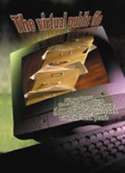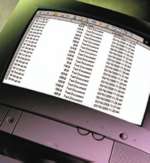
WMRA Homepage Technical Info on WMRA website Photo Tour Site Info & Coverage The LINKY page
By William Fawcett
In a classic camel's-nose-under-the-tent scenario, the FCC made a leap from permitting the use of Web technology for maintaining the public file to requiring the use of the Web for certain EEO files.
In the Report and Order released in January, 2000, the FCC states, "We also require that, if a broadcaster has a web site for its station, it post that station's EEO public file report on that site at the same time that it places it in the station's public file." Indeed, the actual rule in Section 73.2080(c)(6) states that this EEO report is to be placed "on its web site, if it has one." It appears that stations that must meet the new EEO guidelines (in general, those with five or more full-time employees) will be entering the brave new world of the virtual public file.
Main studio rule
Changes in the main-studio rule helped bring this on. Pleadings for the relaxation of the main-studio rule cited the fact that an Internet-based public file could eliminate the need for a physical file in the community of license. In the August 11, 1998, Report and Order, the commission stated: "Although we encourage stations to maintain files electronically…we will not require them to do so given the burdens this could impose on members of the public without computer access or ability, and on stations, given current technology and stations' current computer capabilities." So, here we are less than two years later with a requirement for public-file information on the Web. As you will learn, when it comes to EEO, no requirement is unreasonable.
Broadcasters with a main-studio waiver that maintain a public file outside of the city of license will still have to fulfill telephone requests for certain public-file information to those within the station's geographic service area. It is possible that having the same files available via the Web could reduce the volume of such requests. For all stations, regardless of the location of the main studio, a Web-based file can be a great aid in the organization of the public file.
To post or not to post
Aside from the EEO report, which must be made available on the Web, one must consider the advisability of making public-file information readily available to the general public. Worse yet, it must be available to your competition and adversaries. Let's face it — most public files have seldom, if ever, been visited. Place the same information on the Web, and there is no telling where the data could end up.
For instance, the fictitious group Parents for Teddy-Bear Safety might review the issues list of 100 stations and determine that your station is deficient in promoting bear-safety awareness. Could this lead to a challenge at renewal time?
Certain time-brokerage and sales agreements and, for non-coms, donor lists, comprise a part of the public file. Competing stations typically do not raid each other's public files because reciprocal raids would result. Place the information on the Web and your competition surely will browse.
I'm not sure that the public appreciates that their letters and e-mails become part of the commercial station's public file. Consider the reaction of a citizen who writes a crusty letter (when having a bad day) only to find it, along with identifying personal information, available to all on the Web. Because of their content, some letters are not required to be made public; in all cases, writers may request that their letters not be made public. Still, the thought of posting letters on the Internet should make attorneys quiver, wither with horror or anticipation.
A hybrid model
Placing the public-file template on the Internet would make it clear which files are available. Using HTML, link to sensitive files with a file:\\c:\filename.doc label instead of an Internet URL. Such files will not show up on the Internet. These files could be placed on an intranet server or local machine at the station. The viewer would then have to visit the station to view those files (or call in an order, if the station has a main-studio waiver). Instead of parking a visitor at a file cabinet, you make a dedicated (read-only) terminal available. With a nearby printer and a CGI script to collect credit-card information for printing charges, you could make the operation practically self-service. Ironically, this same technology also lets you record what the visitor views.
Web organization
The programs and issues list files should have names that clearly indicate the time period they cover.
Public files have a way of collecting entirely too much information, and it is a headache to constantly inventory the file to make sure everything is there. Paper files have a way of being misplaced or disappearing altogether. The virtual public file gives you a tool to maintain complete, orderly files.
A simple way to order your virtual public file is to use the 12 subject headings that apply to radio contained in 73.3526(e) as your 12 folders. An index page consisting of the text from the rules could have links from the headings of each of these subjects. The entire text makes it easy for you to determine what goes there as you work on your files. Instead of creating individual HTML pages for each folder, simply place appropriate files within each folder, using very descriptive file names.
For instance, your issues list would be placed in a folder named Issues. Keep it simple. Prepare your issues report using a word processor as you probably do now. You would have file names like 2000 1-Quarter.doc and 1999 4-Quarter.doc. It should be clear to all what these files are. In the absence of a page such as index.html in a directory, your browser should return an Explorer-like listing of all files in that folder. File formats can be anything your browser can read including doc, html, pdf, txt and many others.
This system gives you a quick, dynamic method of organization. It updates every time you add a file. You can see at a glance what is there, and what is missing. A sample virtual public file is available by clicking here. You can use it as a template for your own use, and you can modify it in however you please.
Larger organizations
The law requires that a separate public file be maintained for each station. This results in a filing nightmare for large duopolies or regional public radio networks. Using Web technology, you can index each station separately but share common files, such as issues or ownership, when they are common. Larger groups can make the files available for review at corporate headquarters through restricted servers or CD-ROMs.
Training station personnel in public-file procedures has long been a headache. By implementing a virtual public file on the station intranet, you make the information available in a manner that almost all employees understand. And casual browsing by station employees, on a well-designed website, will only increase their knowledge.
If not now, then when?
Clearly, the issue is not whether you will place public-file information on the Web; it is what information will you place there. Once you get started, it is very easy to use the process as an organizational tool that will help refine and maintain your public file. Documents such as the quarterly issues list can be added to the file in an electronic format as they become available. Scanning time is a major obstacle for historical documents, such as station authorizations. However, this initial start-up time should pay for itself in the form of increased productivity once the file has been established. William Fawcett
is director of engineering at the Center for Public Broadcasting at James
Madison University and president of Mountain Valley Broadcast Service
in Harrisonburg, VA. Photo of the Gates remote control is from the collection
of Chuck Leavens. |

 Recent changes in the public inspection file rules allowed for the following: "All or part of the file may be maintained in a computer database, as long as a computer terminal is made available, at the location of the file, to members of the public who wish to review the file." This rule did not require use of the World Wide Web but allowed for the use of computerized documentation systems, including HTML-based intranet technology. In many ways, this decision makes sense.
Recent changes in the public inspection file rules allowed for the following: "All or part of the file may be maintained in a computer database, as long as a computer terminal is made available, at the location of the file, to members of the public who wish to review the file." This rule did not require use of the World Wide Web but allowed for the use of computerized documentation systems, including HTML-based intranet technology. In many ways, this decision makes sense.

